
Verse Mapping is a Bible study method that examines the context, cross-references, translations, and word meaning of a particular verse in God’s Word.
In my previous posts on Verse Mapping, you learned Step One: Context–discovering the context of your chosen verse. Step Two: Other Translations–looking up your verse in different versions and translations of the Bible. And Step Three: Cross-References–finding other Scriptures that relate to your verse.

Step Four: Word Meanings
The next step is to delve into the meanings of some of the keywords in your verse. Start by highlighting some of the words in your verse that you would like to explore a little more.
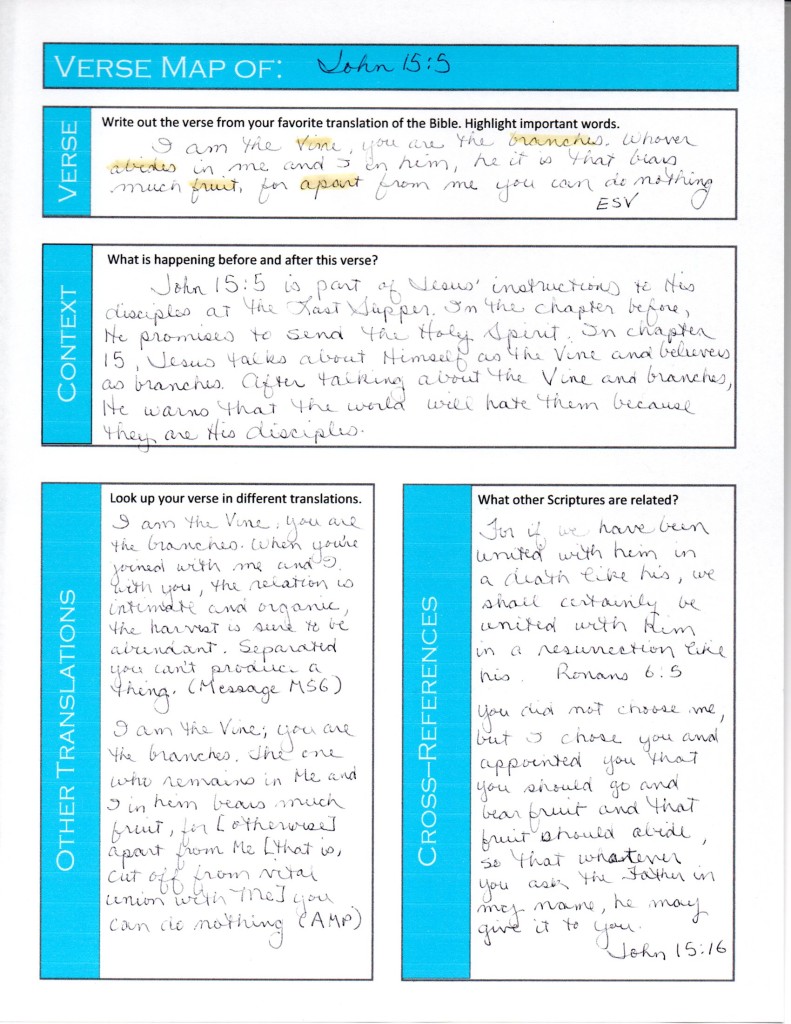
Look up these words in an English dictionary to gain more understanding. For instance, when I look up “branch” at Dictionary.com, I discover that it can mean a division or subdivision of the stem of a tree, shrub, or other plant. Or it can mean a member of a body or system. Christ tells us that we are members of His body, so this second meaning makes sense.
Next, you may want to look up the words in their original language. You probably know that the Old Testament was originally written in Hebrew and the New Testament was written in Greek but may think, “I’m not a Bible scholar. I don’t know those languages. There’s no way I can look up the words in Hebrew or Greek.”
I have not had any classes in Hebrew or Greek either, but I love to explore the meanings of Bible words in the original languages using word study tools–books or online.
The books I most often use are Strong’s Exhaustive Concordance of the Bible and Vine’s Complete Expository Dictionary of Old and New Testament Words. To use these tools, you first look up your verse in the King James Version and find the word that it uses. Look up that word in Strong’s Exhaustive Concordance. Find your verse reference and on the right-hand side you will see a number. That number is the Strong’s number for the Hebrew or Greek word. You then look up your word in Vine’s Dictionary and find the definition with that number.
Using Blue Letter Bible
Thankfully, online tools make the process so much easier! The tool I most often use to find the meanings of Greek or Hebrew words is Blue Letter Bible. Here the first step is to type your Bible reference in the search bar. The whole chapter will appear. Click on the “Tools” button next to your verse and an expanded view of the verse will appear (note the green arrow pointing out the “Tools” button).
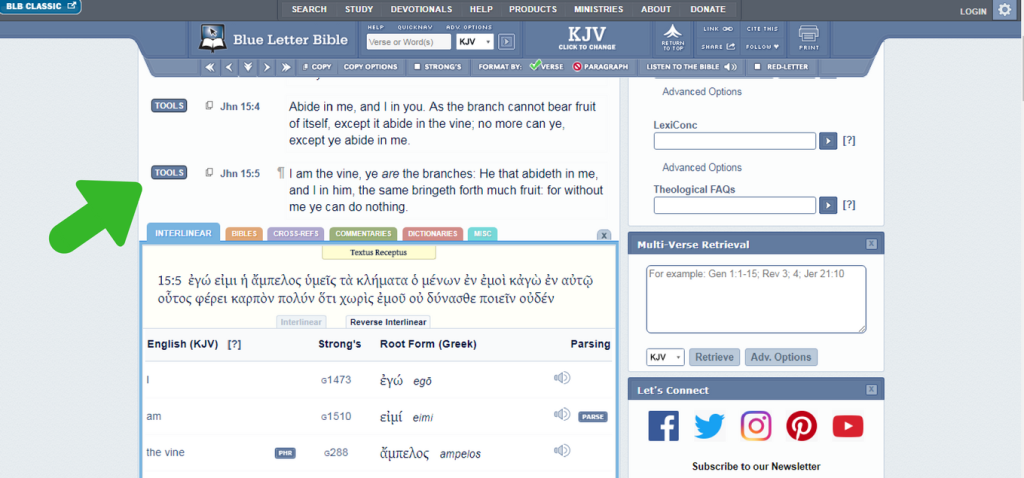
For each word or phrase, you will see the Strong’s number and the Greek or Hebrew word corresponding to the English word. Click on the Strong’s number and a page about the Greek or Hebrew word will appear. Here is the page for the English word “abide” which is the Greek word meno (Strong’s number 3306).
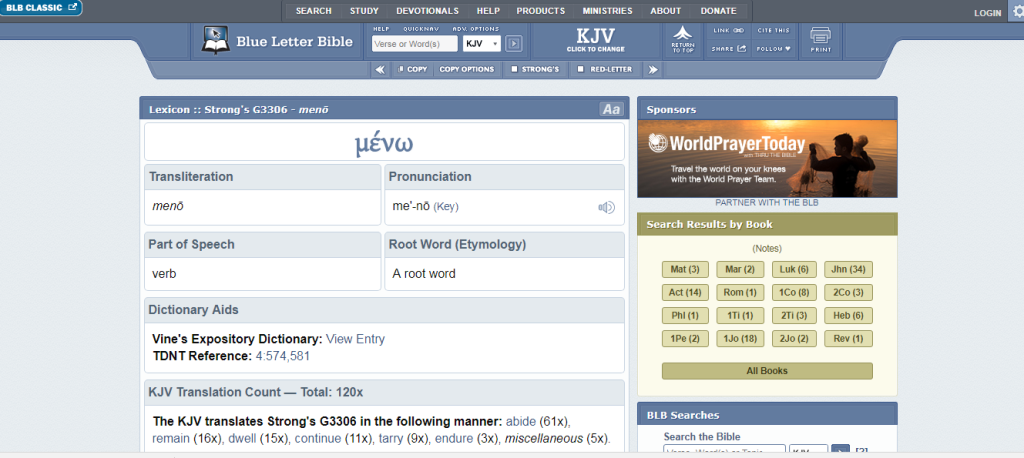
Scroll down and you will find an extended definition of Bible usage of the word.
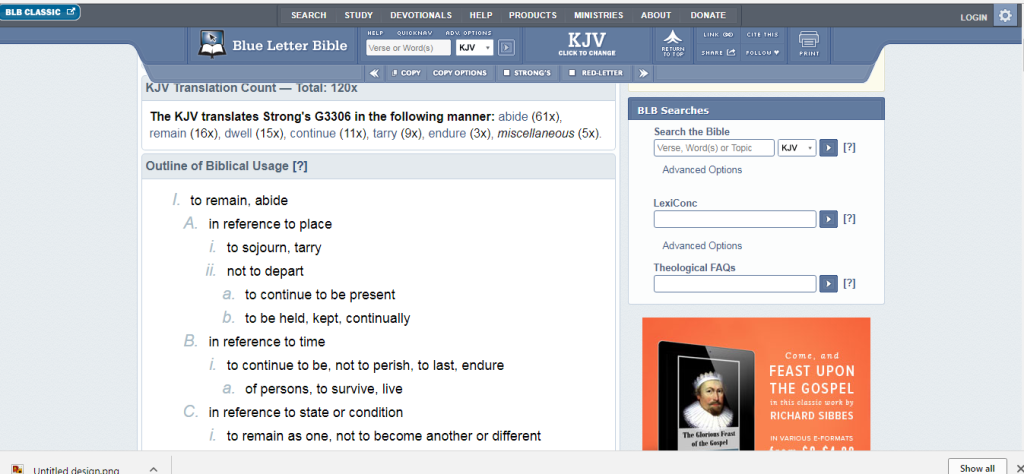
Scroll down even further and you will find a list of other Scriptures where the same word is used. And just like looking up cross-references can help you understand the verse (Step 3), seeing how the word is used in other places in the Bible can help you understand the word.
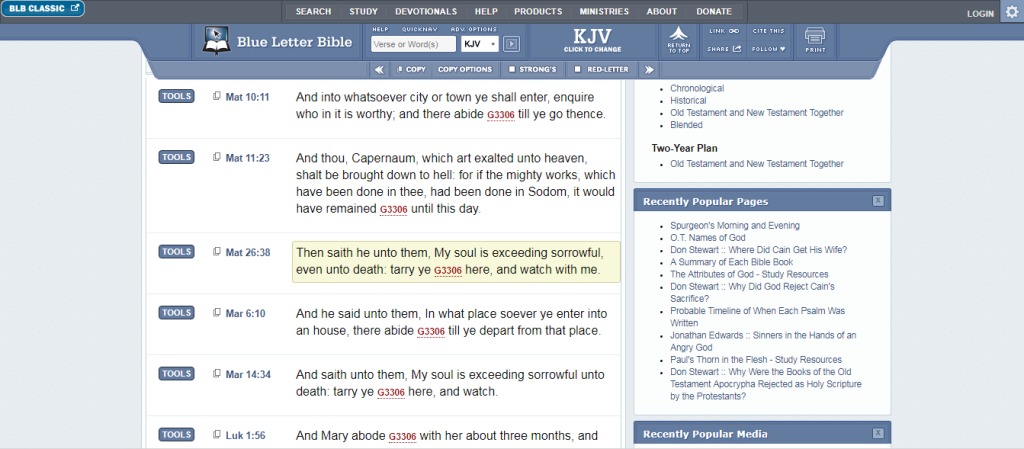
From the tools on Blue Letter Bible, I discovered that to abide means to remain and not depart. It means to continue to be present. When I am abiding in Christ, I am remaining close to Him. I am being present with Him. I especially loved the meaning, “to be held, kept, continually.” Abiding is something I don’t have to do on my own–Jesus constantly holds me to Him.
Follow this process for the words you highlighted in the verse. Write down the meanings on page 2 of the Verse Map Template.
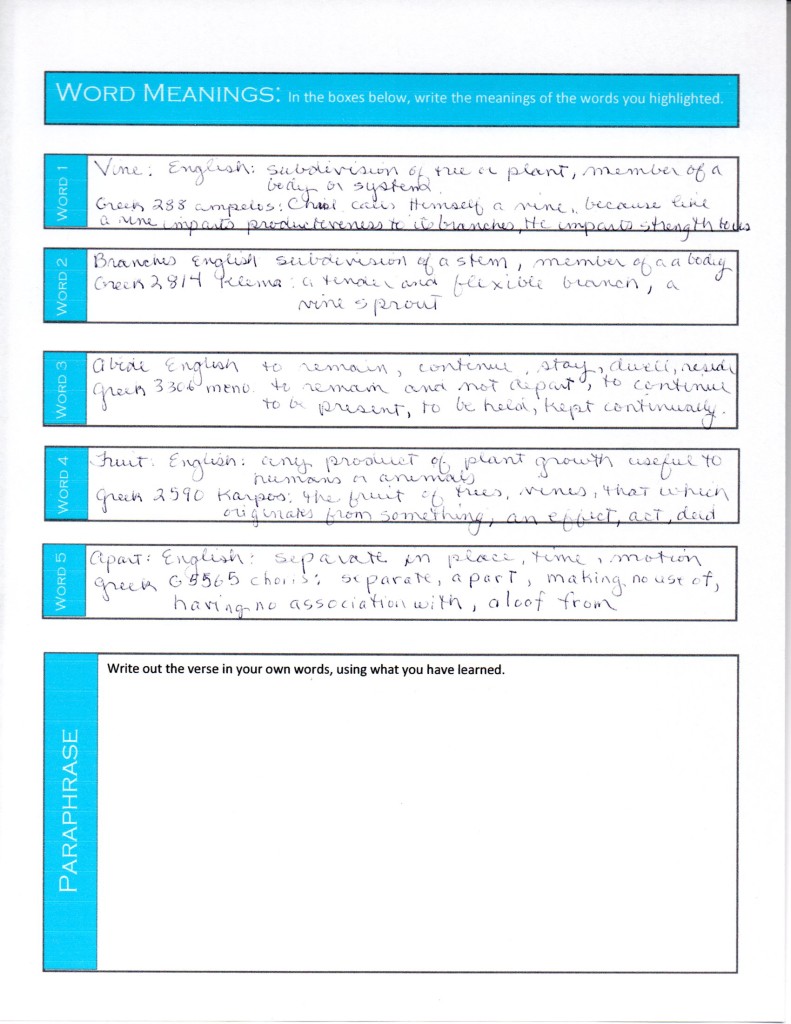
Taking the time to look some of the keywords in your verse can help you dig deep into the meaning. Sometimes looking at the original languages will give new insight that you have never thought of before. Most importantly, the Holy Spirit continues to teach us as we spend time thinking about the Word.
Next step: Highlight keywords in your chosen verse. Look up these words in an English dictionary and in a tool that helps you discover the meaning of the word in the original language of Hebrew or Greek. Write your findings in a journal or your Verse Map template. You can download one here.



Follow Me!